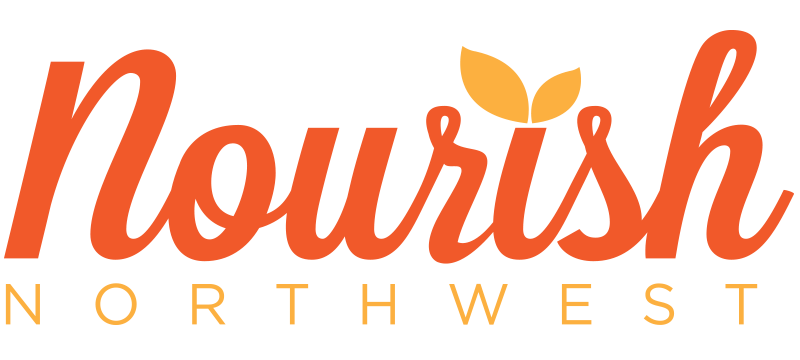Is Breakfast in Need of a Change?
Post by Paula Jahn, Registered dietitian and Co-owner at Nourish Northwest
This post is inspired by a webinar that I watched last week for continuing education credits. It was entitled Development in Protein’s Role in Promoting Lean Body Mass. You can click on the link to watch the recorded webinar. Full disclosure: The webinar was sponsored by Daisy Cottage Cheese and the two presenters have ties to the National Dairy Council and to the National Cattleman’s Beef Association and Texas Beef Council. Their research focused on animal sources of protein.
To summarize, the presenters have found that consuming moderate and equal amounts of protein at each meal can optimize protein synthesis. This means muscle building for physically active young adults and prevention of muscle wasting for bed-ridden young and older adults. The speakers pointed out that the typical American meal pattern tends to skew protein consumption toward dinner, with just over 10% of daily protein coming from breakfast.
The main point of this presentation was to maximize protein distribution for muscle growth. However, there was a study they mentioned that emphasized total calorie consumption as it relates to protein at breakfast. Breakfast is a topic that almost always comes up as an issue during nutrition counseling sessions, especially for weight loss. I’ve observed over the years that people who skip breakfast (or eat very little) end up eating extra snacks at night. These snacks are usually not as nutritious as breakfast would have been. The research backs this up. Breakfast is an important hunger management tool; appetite control often gets overlooked as part of a weight loss strategy. If increasing the protein content of breakfast can help even further with appetite, then it may be something I recommend to clients.
I like to apply the research on myself before I provide specific recommendations to my clients. How realistic is 25-30 grams of protein for breakfast? What does it look like? Is this even practical for vegans or people who cannot tolerate dairy?
I am typically a carbohydrate seeker in the morning. I love oatmeal, French toast, pancakes, waffles, etc. This is not to say that my breakfasts are devoid of protein: I add nuts or nut butter to my oatmeal, make pancakes with almond flour and/or eggs, and a piece of French toast soaks up nearly a whole egg. When I look at my typical breakfast, I consume about 12-15 grams of protein. It is quite normal for me to be hungry for a mid-morning snack.
So, I set out to consume 25-30 grams of protein for breakfast for a week. I took note of the total calories each breakfast provided and my hunger level throughout the day. For reference, I eat between 2,200 to 2,400 calories per day.
Days 1 & 3: 2 eggs sautéed with beet greens, 1/2 cup 4% cottage cheese, sprouted grain toast with butter. Total protein–30 grams, 310 calories.

Day 4: 1/2 cup beans sautéed with garlic and spinach, sliced chicken breast, avocado, 1 oz cheddar cheese. Total protein–35 grams, 400 calories.

Day 5: Ate out. Had 2 poached eggs, 1/2 cup black beans, cheese, avocado, sour cream, salsa and 3 mini corn tortillas. My guess was total protein–40 grams, 700 calories (at least).
Day 6: 3/4 cup whole milk plain yogurt, 1/2 cup homemade granola (with walnuts, almonds and sunflower seeds) PLUS a homemade peanut butter cookie. Total protein–26 grams, 420 calories.


Things learned:
- It is difficult to stay away from dairy, meat, and eggs in order to get t0 25-30 grams of protein. Nuts and nut butter are great, but I’d have to put over 1/4 cup of it in my oatmeal to get the 25 grams of protein. That would be unpalatable and expensive.
- The egg and cottage cheese breakfast was the most satiating and had the least number of calories. I really wasn’t hungry until lunch. A close second was Day 4. (I did not track total calories, so I have no idea if it caused me to actually eat less overall.)
- It forced me to be more creative for breakfast. I ate leafy greens on 2 days, and made granola and breakfast cookies.
- Will I recommend this to my clients? It’s hard to argue with how satisfied I felt. I may encourage a little more protein for breakfast without being dogmatic about the grams. I really enjoyed the day I had beans and avocado. It felt good to have a savory breakfast without eggs. The cheese and chicken could easily be swapped out for quinoa and nuts or seeds.




